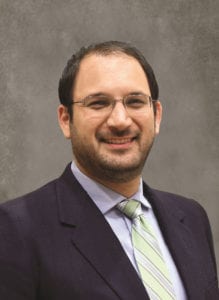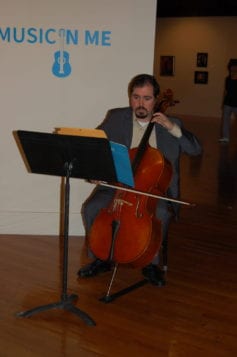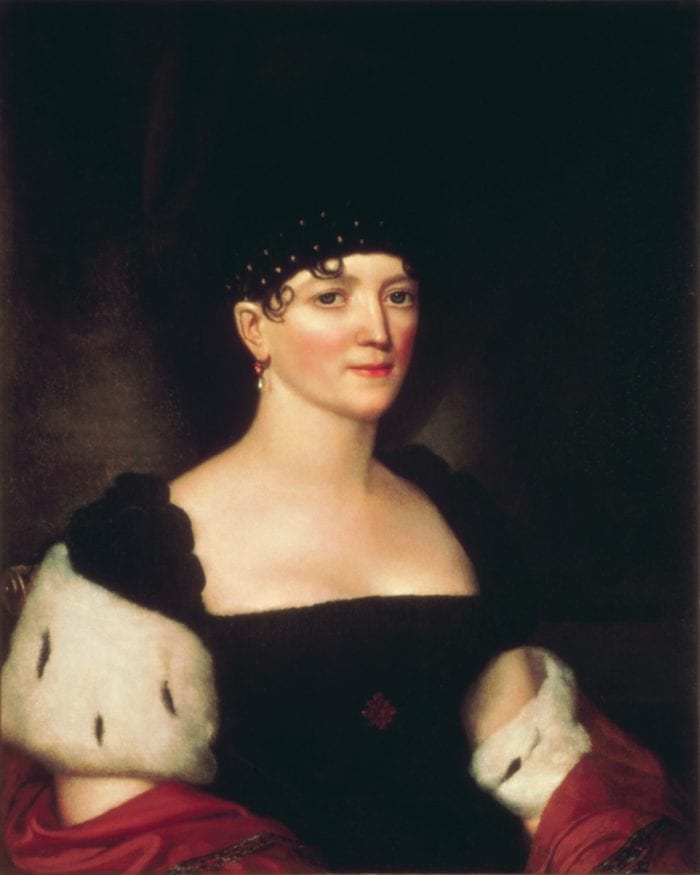SOLES for All Souls Run/Walk All Souls Church, 61 Main St., Stony Brook will hold its 8th annual SOLES for All Souls 5K Run/2K Walk on Sunday, Oct. 2 at 9:30 a.m., rain or shine. Proceeds from the event will help fund the maintenance of the historic chapel and church outreach events to the community. All preregistered runners and walkers are guaranteed a commemorative T-shirt. A postrace award ceremony will be held in the parking lot behind the church immediately after the event. Registration is currently underway through the www.active.com website, and there is a special discounted rate for participants under 19 of $10/person. For more information, call 631-655-7798.
Award winning documentary ‘Magnus’ to be screened at Theatre Three
CHECKMATE!
Theatre Three, 412 Main Street, Port Jefferson will screen the award winning documentary “Magnus” on Monday, September 26 at 7 p.m. as part of the 2016 Fall Port Jefferson Documentary series.
Through archival footage and home movies “Magnus” tells the story of 26-year-old Norwegian chess champion Magnus Carlsen’s rise to the top. A hit at several international festivals and winner of the Ray of Sunshine prize at the Norwegian International Film Festival, the documentary also gives the audience a peek inside the isolated world of the chess community. In English and Norwegian. Sponsored by the Long Island Chess Club. Guest speaker, via Skype, will be the director, Benjamin Ree.
Tickets are $7 and will be sold at the door. For more information, call 631-473-5220 or visit www.portjeffdocumentaryseries.com.
Please note the incorrect date was listed in the printed Times … and dates calendar under the photo.
SBU professor receives grant for an innovative study on autism spectrum disorder
By Rebecca Anzel
A young scientist at Stony Brook University has received a $2.3 million grant to fund research he hopes will eventually lead to new therapies for the treatment of autism spectrum disorder.
Matthew Lerner, Ph.D., is an assistant professor of clinical psychology at Stony Brook University, and director of the Stony Brook Social Competence and Treatment Lab, the focus of which is learning to understand how children and teens with ASD form friendships.
“We use the word lab loosely, only because we collect data there,” he said. “It’s a fun space with games and activities for kids.”
“Matthew Lerner is sort of a pioneer in his thought process, and that’s what makes him special to me.”
— Priscilla Arena
His work thus far has ranged from lab-based studies — evaluating and developing tools to measure what is happening during social interactions and how the brain processes those interactions — to real-world applications. Lerner’s previous studies ask how, when and if kids make friends, and what helps them do so.
Efforts to link these two levels of analysis have never been done simultaneously — until now. Lerner won a highly competitive National Institute of Mental Health award to fund his innovative approach to studying social behaviors of children with ASD.
“It’s kind of remarkable that it really hasn’t been done in quite this way before,” he said. “We presume that these things — lab-based measures of how kids think about social interactions and real world interactions themselves — are linked, because otherwise, why would we look at them? But how they’re linked, and importantly, how we can understand how those links differ across individuals, hasn’t really been done thoroughly before.”
Priscilla Arena, the leader of a support group for parents of children with ASD, said Lerner is excited about the potential the grant gives his research.
“Matthew Lerner is sort of a pioneer in his thought process, and that’s what makes him special to me,” she said. “He sees potential in the future.”
It’s not far from her initial reaction after meeting with the Stony Brook researcher, who asked permission to speak to the parents in her group.
The Suffolk Aspergers/Autism Support and Information co-founder wanted to protect the parents, who have “already been beaten and kicked” by others looking for monetary donations and permission to study their children. But when she met Lerner, she said she knew almost immediately that he was different.
“He’s sincere, honorable, impassioned, smart and cerebral,” Arena said. “I don’t think my first impression of him has ever changed, and I think that’s why, from the get-go, I’ve had respect for him.”
The award, called Biobehavioral Research Awards for Innovative New Scientists, was created in 2009 as a way to provide younger scientists with financial support for research. It is for early-stage investigators who are on a tenure track and have no prior research project grants.
“BRAINS” is earmarked for “the most promising early investigators” and is “one of the most competitive [awards]” NIH offers, according to Lisa Gilotty, Ph.D., program officer of Lerner’s grant. Gilotty is also the chief of NIMH’s research program on autism spectrum disorder.

Lerner is examining how well various biological and social factors, both independently and jointly, can predict how teenagers aged 11 to 17, with and without ASD, socially interact outside of a laboratory. In the five-year project, he and his team are also studying how those factors correlate, and which best explain the resulting social behaviors.
They are hoping to use information gleaned by observing the teenagers inside and outside the lab to make precise predictions about how they make friendships.
Depending on the results, the team might be able to develop generalized patterns that can be applied to a large number of people on the spectrum and be used to create more targeted therapies.
“This is an extremely important study that will shed light on the wide variability observed in social function in ASD,” said James McPartland, director of the Yale Developmental Disabilities Clinic. “Presently, little is understood about the biological reasons for these individual differences. Dr. Lerner’s study will help us understand these differences from both behavioral and brain-based perspectives.”
Dozens of the 260 teenagers — 160 with ASD and 100 without — participating in this study are Three Village students. Lerner and his team have also connected with special educators in the area to see how participants are doing outside the lab in a classroom.
He and his team spend a lot of time in the community, at family events and meetings with parents and educators to introduce themselves, share information about their work and to learn what challenges children are experiencing. Because Lerner wants the work he does to matter to parents and community members, he calls them “stakeholders” in his research.
“The most impressive thing about him is how community-minded he is,” President and Executive Director of Asperger Syndrome and High Functioning Autism Association (AHA) Patricia Schissel said. “It is important that he’s not stuck in a lab. He’s excited to get out into the research community.”
Arena said quite a few study participants are from SASI as well — her son included. Besides hosting support groups, the program, which was co-founded by Arena with Stephanie Mendelson, provides resources and runs events and programs for special needs families.
Arena and her son were asked to complete a 500-question survey as part of the screening process, and have committed to 20 weeks of social groups.
What appealed to her about this study is Lerner’s concentration on trying to develop more effective treatments and therapies for ASD as opposed to looking for a cure.
“I always say, unless you’re going to do a lobotomy, [saying there is a cure] is baloney,” she said. “You can calm certain conditions of it down through behavior modification and therapy, but you cannot cure it. There’s no way to reverse how the brain has been formed. My son will have it forever.”
Schissel said Lerner’s study has the potential to change treatment options for those with autism as genome sequencing did for cancer.
Oncologists previously “threw the kitchen sink” at cancer and attacked tumors broadly. Once genome sequencing was developed, doctors could instead more easily treat tumors directly. Such an approach to ASD therapies would be more effective and “waste less time and enormous amounts of money,” she said.
Michael Greenberg, a social worker for outpatient child and adolescent psychiatry at Stony Brook Medicine, agreed that more specific treatments and therapies are more efficient and effective.
“It creates an opportunity to have the odds be the best the first time,” he said. “No one can predict what he’s going to find, but he’s trying to come up with something that can be replicated and benefit people more widely.”
The results from Lerner’s study might also be applicable to children without ASD. He said it is unclear whether the social patterns he and his team might uncover are unique to kids with autism. There is a potential for any treatments that stem from his findings to benefit any kid who struggles socially.
Between You and Me: New Yorkers first; then first ladies
By Leah S. Dunaief

History came alive on the distaff side last Monday night, as Elizabeth Kahn Kaplan talked about the nine first ladies born in New York State. Kaplan, a longtime resident of this area, author and prominent member of the Three Village Historical Society, combined her appreciation for history and art with delicious details from the lives of the nine women to make a delightful and informative evening at the Setauket Neighborhood House.
So who are those women?
Some of them we can tick off readily: Eleanor Roosevelt, Jackie Kennedy, Barbara Bush and Nancy Reagan. Others are shrouded in more distant history. They are the wives of Presidents Monroe, Van Buren, Tyler, Cleveland and Fillmore.
Here is an example of one of Kaplan’s anecdotes about these women. Elizabeth Monroe, born of an aristocratic Loyalist family in 1768, who disregarded the disapproval of her father to go ahead and marry the patriot James Monroe, is generally credited with saving the life of Madame de Lafayette. The wife of the French hero of the American Revolution was incarcerated as a result of her aristocratic heritage during the Reign of Terror and about to be guillotined, as had been her grandmother, mother and sister before her. At the time, Monroe was the ambassador to France, but was unable to officially intercede. Elizabeth Monroe, not bound by diplomatic constraints, acted on her own and publicly went to visit Mme. Lafayette in prison, promising to return each day. Not wanting an appearance of conflict with America, the French authorities released Mme. Lafayette the next day.
When Monroe became president, did the American public appreciate his wife? They did not, as Kaplan reported. She was far too elegant and aristocratic for American tastes.
Tyler’s wife, Julia Gardiner, born on Gardiner’s Island, was known a bit infamously as the “rose of Long Island” and was called “madam presidentress,” the term “first lady” not having been coined until much later. Gardiner was Tyler’s second wife, and she attracted a lot of attention by being the first to marry a sitting president and for being 30 years younger than him. Tyler’s eldest daughter was five years older than her stepmother.
And so the stories unfolded, Kaplan keeping her audience totally engaged for well over an hour. Martin Van Buren, the first president to be born after American independence, and the only president to speak English as a second language, married his childhood sweetheart, Hannah Hoes. She spoke Dutch at home with her husband and was his first cousin once removed. Millard Fillmore married Abigail Powers, a schoolteacher. Both were upstate New Yorkers.
Grover Cleveland, who served two terms, but not consecutively, married Frances Folsom, a woman 22 years younger. A bachelor when he entered office, he married the daughter of a close friend. He had looked after her as executor of his friend, Oscar Folsom’s, estate and simply waited until she was old enough before they married. At 21, Frances was the youngest first lady, and she was well-liked. She is appreciated for having started kindergarten in schools.
The other first ladies are well known to us. Eleanor Roosevelt is credited as the most influential and active first lady in our history. The longest-serving first lady, as wife of four-term president Franklin Roosevelt, she went on to a public life of her own. Jackie Kennedy became an American idol and is known for her cultural efforts and redecorating the White House. Barbara Bush, with her forthright style, her constant loyalty and support of her family, and refusal to dye her hair when her husband became president, was always a more popular figure than he. And Nancy Reagan, Ronald Reagan’s second wife, was a diminutive and elegant first lady whose life was dedicated to protecting her husband after the assassination attempt that wounded him and his press secretary.
They are fascinating women and we can claim them as our own.
State to fund Setauket Harbor improvements

Advocates for the health of the Setauket Harbor were given an essential resource to aid in efforts to improve water quality in the North Shore port this week.
State Sen. John Flanagan (R-East Northport) announced he secured a $1 million grant from New York State for Brookhaven Town at a press conference Sept. 20 to be used to improve water quality in the harbor.
The announcement came on the heels of a recent water quality study of Setauket Harbor done by Cornell Cooperative Extension and commissioned by Brookhaven, which turned up troubling results. Setauket Harbor is part of the larger Port Jefferson Harbor complex.
“The recent water quality report commissioned by Brookhaven pointed out that Setauket Harbor has significant water quality issues caused mainly by road runoff from rain water flooding into the harbor after storms,” Laurie Vetere, chairwoman for Setauket Harbor Task Force, a volunteer group, said during the press conference.
“It’s clear that the harbor has some serious challenges.”
— George Hoffman
The grant will fund three projects relating to the harbor.
Half of the $1 million will go toward improvements to the dock. Forty percent will be used on storm water infrastructure improvements and the remaining $100,000 will be used to remove silt that has accumulated in the harbor and its water sources.
Nitrogen pollution and coliform bacteria have plagued Setauket Harbor in recent years.
“I don’t think we were surprised — the harbor has been struggling for years,” George Hoffman of the Setauket Harbor Task Force said in an email. “It has been closed to shell fishing for more than a decade and the main creek leading to the harbor is filled with sediment and not stopping contaminants in storm water from flowing into the harbor … it’s clear that the harbor has some serious challenges.”
Restrictions were placed on shell fishing in other Long Island waterways by the New York State Department of Environmental Conservation in 2015 because of water quality concerns.
Flanagan said the grant should be a step in the right direction to improve the harbor’s waters.
“Long Islanders are blessed with access to magnificent waterways like Setauket Harbor,” he said during the press conference. “That’s why it is important that all levels of government work together to preserve and protect these fragile ecosystems. This state funding will help support critical improvement projects to restore and revitalize this beautiful natural resource and it is my pleasure to partner with [Brookhaven Town Supervisor] Ed Romaine, the Town of Brookhaven and Setauket Harbor Task Force to help bring this project to reality.”
Flanagan, who is up for reelection in November, said in an interview following the press conference that environmental issues are an “A-1 priority” to his constituents.
“They deeply care about the environment,” he said. “I have a lot of coastal property in the district I’m fortunate enough to represent … it’s all important stuff.”
Romaine (R) has been an advocate for legislation to improve Long Island’s water quality for decades. In June, the town approved a law proposed by Romaine that prohibits structures being built within 500 feet of any Long Island waters from having cesspools or septic systems.
“I thank Sen. Flanagan for his strong advocacy on behalf of the Town to help us get started on improving the water quality in Setauket Harbor and the watershed that surrounds it,” Romaine said. “By acting now, I believe we can prevent further contamination, reverse the damage that has already been done and begin to restore this beautiful natural resource back to a healthy and environmentally sound waterway.”
‘I’ve Got the Music in Me’ opens at The LIM





Winners honored at art reception last Sunday
By Heidi Sutton
The Long Island Museum in Stony Brook kicked off its annual juried art competition, I’ve Got the Music in Me, with an artist reception on Sept. 18. Amateur and professional artists across Long Island were invited to submit up to three works with a music theme for the exhibition, which is now on display in the Visitors Center.
Executive director of The LIM, Neil Watson, congratulated the artists and thanked them for rising to the occasion and addressing the theme of the exhibit. The idea for a music-themed art exhibit came out of the previous exhibition in the Visitors Center — Common Ground: The Music Festival Experience — and also from the fact that the museum is now home to the singer/songwriter series Sunday Street as well as the North Shore Pro Musica group (chamber music), among others. “For us, it is very important to have music and as a theme it is a challenge, visually, so I appreciate all of the artists who did this and the show is a really handsome exhibition,” said Watson.
Museum staff members combed through 144 pieces submitted by 68 artists to come up with the final 59 entries that make up the exhibition, and juror John Cino chose a first-, second- and third-place winner along with two honorable mentions. (See juror’s comments under each photo.) Barbara Jo Kingsley of Huntington Station captured first place with her serigraph, “Mississippi River Blues”; Neil Leinwohl of Rockville Centre took second place with “Love the One You’re With”; and Renee Caine of Holtsville garnered third with her oil painting, “Hello.” Honorable mentions were handed to Hicksville’s Lynda Wright for her acrylic painting,“ Bridge of Dreams” and Andrea Baum from Lynbrook for her photograph titled “Trumpet Player.”
Lisa Unander, director of education at the museum, said that, when choosing the five selections, Cino noted that “Music means a lot of different things to different people. Many artists in this exhibition chose to depict musicians making music or listeners responding to music. At least since the time of [Wassily] Kandinsky there have been artists who have attempted to create a visual analogy of music which is essentially the organization of sound over time.” The exhibit runs through Oct. 23. For more information, call 631-751-0066 or visit www.longislandmuseum.org.
Plastic bag fee looks to limit waste from LI shoppers
It’s official: bagging your groceries will cost you.
The Suffolk County Legislature approved a 5-cent fee per plastic grocery bag this month, which will be collected and kept by stores. The main goal of the legislation is to reduce bag waste by incentivizing shoppers to avoid the fee and bring their own bags.
“I feel relieved,” Suffolk County Legislator William “Doc” Spencer (D-Centerport) said in a phone interview. “But I am also concerned.”
Spencer said he is “sensitive” to struggling families with the current cost of living, and doesn’t want them to feel like this is a new fee or tax being imposed on them.
“This is nothing new, people are paying for these bags already,” he said.
“Plastic bags are a mistake of the past. Reusable bags are the solution for the future.” —Adrienne Esposito
According to the legislator, grocery stores already work the price of the plastic bags they give away into the price of products they sell.
A report conducted by the Metropolitan Washington Council of Governments about plastic bags stated consumers pay $37.50 per year in hidden bag costs passed on by retailers.
But some residents are not on board with the future fee. Suffolk County Legislator Sara Anker (D-Mount Sinai) said she heard many responses from senior citizens in her district that they don’t like the new bill.
“I had an overwhelming response from residents not supporting the fee,” she said in a phone interview. “To [the senior community] it’s just another expense. The 5 cents goes right back to the retailer, and it should really go to a designated environmental fund.”
The idea of the fee going to an environmental cause was first implemented in Washington D.C., the first place in the United States to impose a 5-cent fee on plastic bags, with the Anacostia River Cleanup and Protection Act. According to the legislation, only 1 out of the 5-cent fee is collected by the store, and the rest is deposited in the Anacostia River Cleanup and Protection Fund.
In a 2013 study of the D.C. law, researchers found that both residents and businesses reported a significant reduction in disposable bag use and a majority of residents and businesses supported the bag fee. In addition, both residents and businesses said they saw fewer plastic bags littering the area.
Spencer said creating legislation similar to that in D.C. was discussed, with part of the fee going toward an environmental cause, however it ended up being out of his control.
“I would love to do that, but we don’t have the taxing authority,” Spencer said. He explained it would require state action for part of the fee to be divided and sent to an organization.
“I would love to see that money go towards conservation,” he said. “But it is important to move forward now and not wait for the state to act. On a county level, we’ve taken the lead.”
Spencer said he hopes eventually the state will create legislation that will supersede his own, but for now he must continue to do his job.
Citizens Campaign for the Environment Executive Director Adrienne Esposito applauded Spencer’s legislation.
“Plastic bags are a mistake of the past,” she said in a statement. “Reusable bags are the solution for the future. This legislation will reduce plastic bag use by 60 percent or more and that will make our communities and our bays cleaner and greener, and save us money. Kudos to Suffolk County Legislator Doc Spencer for his leadership and persistence in protecting our environment.”
The CCE said there is more plastic in the oceans than plankton, with 46,000 pieces of plastic in every square mile. Many marine animals are choked and strangled by bags, or die consuming them. The CCE said plastic pollution negatively impacts 267 species of marine life.
John Durso, president of Local 228, a retail labor union and Long Island Federation of Labor, said the bill will introduce positive change to Suffolk County. “The Suffolk County plastic bag law is truly an innovative bill that takes great steps to cut back on environmental waste, while also addressing the needs of local workers and businesses,” he said in a statement. “We were glad to work with the Suffolk County Legislature to collaborate on a landmark legislation that will protect our environment for future generations of Suffolk County’s working families.”
The fee will go into effect Jan. 1, 2018.
Kings Park remains perfect with blanking of Comsewogue
Kingsmen have won all six matchups, 3-0, this season

By Bill Landon
When you think of girls’ volleyball, you think Kings Park.
The Kingsmen have been a powerhouse for years, and despite losing strong seniors each year, the team continues its winning ways. In the still early season, Kings Park has managed to sweep all five of its opponents leading up to the Sept. 19 matchup against Comsewogue, which was no different.
The Kingsmen invaded Warrior territory, and although Comsewogue came close in the second set, the five-time Long Island champions prevailed, defeating their opponent 25-7, 25-17, 25-6.
Kings Park head coach Ed Manly was happy with the result the team put up despite its much different roster.
“We had a little bit of a different [mix] out there today, so that was an adjustment for our girls,” Manly said. “If you haven’t seen us play before, you wouldn’t know we’ve had a serious adjustment to our lineup.”
Sophomore Carly Esterson set the tone early with an unbroken service rally that put Kings Park out front 11-1. It was the setter’s first varsity start, but you wouldn’t know it, as she settled in scoring point after point.

“I don’t really play much, but we were together mentally on the floor,” Esterson said. “We had good communication.”
Comsewogue struggled at the net — having a hard time finding a rhythm — as Kings Park demonstrated why they’ve gone to the New York State quarterfinals four out of the last five years.
Momentum shifted in the next, as Comsewogue closed within three points midway through the second set, trailing 17-14. It would be as close as the team would come though, as Kings Park slammed the door, taking the set 25-17.
Manly pushed deep into his roster throughout the game, and each player on the team saw action.
“Everyone from the first kid on the floor to the last kid on the bench got after it tonight,” he said. “They played hard, they were loud and vocal, so there’s a real sense of family on the court. They feed off of that.”
The Kingsmen turned up the heat in the third set, jumping out to a 13-3 advantage, forcing Comsewogue to call a time out. Looking for the first win of the season, Comsewogue head coach Kevin Parker did not doubt Kings Parks’ power.

“We knew Kings Park was going to be good — we know their reputation,” Parker said. “But our girls have been putting in a lot of work this year. We’re building, and the hope is to turn this program around.”
Senior outside hitter Lauren Kloos said her teams’ preparation was no different from any other game, and Kings Park put the matter to bed, and dominated the final set, claiming a 25-6 set to sweep the match.
“We faced Comsewogue like we prepare for any [team],” she said. “We put in our practice and we get ready. Our sophomore setter [Carly Esterson] — the way she stepped up — she completely killed it, so to be able to communicate and adapt to a new setter on the court, we did it really well. I don’t think we could’ve done it any better.”
10-minute lapse leads Ward Melville to 2-0 loss
Ward Melville deflated following a Brentwood score that unbalanced a 0-0 stalemate, and with the 2-0 loss on the boys’ soccer team’s home turf Sept. 19, the Patriots slipped under .500, falling to 2-3 in League I.
“I think that we let down a little bit once we were scored on, and that’s something we’re looking to change,” Ward Melville head coach Jon Stecker said. “Having a young team — we want them to grow in those areas. I don’t think they were out of the game, and I think we could’ve come back at 1-0, but at 2-0 I think we gave up a bit.”
He also doesn’t believe his team capitalized on its opportunities.

“You don’t get a lot of opportunities in soccer — it’s one of the sports unlike basketball or football,” Stecker said. “[Brentwood] had it a couple of times and they were able to finish, which is pretty indicative of how they play. We definitely need to take advantage more of those opportunities if we’re going to win games.”
Ward Melville sophomore goalkeeper Caleb Rosenthal made three big stops to preserve the clean sheet in the first half, but his team’s offense struggled to take shots.
“It was a rough game,” he said. “We played pretty well, but there was a 10-minute lapse and they put two in on us and that was it.”
He admitted he was nervous coming into the game, but helped hold it down on the defensive side of the ball to maintain the 0-0 score heading into the second half.
“Brentwood is a good team, very competitive — but you have to keep your head straight and stay motivated,” he said. “It’s wet, so you really have to control the through balls, but I think we needed more through balls on the ground to be able to run into them, and more combination play.”

Rosenthal made a leaping save when he tipped the ball away with less than 25 minutes left to play, but five minutes later, as he came out of the box to make a save, the ball was passed up top to a forward who shot the ball into an empty net.
“I saw the ball go through and I was a little slow to react to it, so I tried to make up the space, but he was able to play it through and he was onside,” Rosenthal said. “So he got lucky there.”
At the 14:54 mark, Brentwood beat out Ward Melville’s defense up top, as the boys backed up, and the opposition beat out Rosenthal with a shot to the left corner for a 2-0 edge.
“It hurts a lot,” said junior forward and outside midfielder Harry Radke, who played outside back for much of the game. “It takes a lot out of you after you’ve put in all that work, but we just have to rebound after that, and we didn’t do that today. We slacked at some points and that hurt us.”
Like Rosenthal, Radke said the team needs to improve its combinations while switching the ball more and communicating as a unit to help the team grow this season.
Senior forward Jared Lee said he agreed that his team collapsed once the first goal went in, but added that the time spent in the Patriots’ zone didn’t help.
“We spent too much energy playing defense,” he said, “and we didn’t have enough energy to get back up the field.”
Being one of the lone senior starters, Lee has his plate full leading his team on the field during gameplay, and standing as an example to show his teammates where the rest of them should strive to be.

“He is the best player that I’ve ever had in the last 20 years that I’ve been here,” Stecker said of Lee. “He just conducts himself with 100 percent class all the time, he gives 100 percent, he doesn’t open his mouth; he’s the epitome of a class player. I’d like to do better for him. He just gives us everything he has, and he’s phenomenal.”
Lee battled up top all afternoon, and had several close looks, but Brentwood’s defense double and triple-teamed him to kept him away from the box for most of the game.
“We need to keep the same mentality through the whole game,” Lee said. “And not get let down if we let up a goal.”
The Patriots have made the playoffs nearly every year over the last 20 years, according to Stecker, who hopes to put the team on a new trajectory to get them the postseason experience it so desperately needs.
“We do think [the Patriots are] going to be a much better team in October,” Stecker said. “Due to the fact that we really only have one or two seniors starting — there is a maturity aspect there — but again, everyone steps on the field, everyone has a heart, so they should be giving 100 percent, there’s no excuses.”
Port Jefferson Station-based family company ensures no roof in Suffolk is left behind

By Rebecca Anzel
Whenever Denise Pianforte saw one of her neighbors getting a new roof installed, she hoped to soon be able to afford one as well. The Port Jefferson Station home she lived in with her sister, Heather Richards, was 60 years old.
Pianforte saw a flier on her church’s bulletin board for a program that advertised a free roof for a Suffolk County family in need. “I always pray to God to help me find a way to get the money [for a new roof],” she wrote in the online nomination form. She added that even with her and her sister each working two jobs at over 50 hours a week, it looked like the day would never come. “Seems like my only hope would be to win the lottery.”

She did not win the lottery, but she did win the new roof. A-1 Roofing & Siding, a family owned and operated contractor in Port Jefferson Station, installed it Feb. 6.
Maria Malizia and her three brothers, who took over running the business after their father retired, became involved in the national No Roof Left Behind program last year.
No Roof Left Behind provides contractors with the necessary tools and resources to construct a free roof for a local family in need. The program was founded in 2009 by Jay and Dena Elie, the owners of a Detroit roofing firm called Ridgecon Construction.
Malizia said that they were immediately interested in the opportunity to help deserving families in Suffolk County.
“We’ve been in the community for decades and were just happy that we were finally able to give back a little,” Malizia said. “When we heard about the program, we said to ourselves, how could we not do this.”
After helping Denise Pianforte and Heather Richards, Malizia said the immediate gratification let them know they needed to continue their involvement with No Roof Left Behind.
“They were really grateful, excited and relieved that they were safe under a new roof and didn’t have to worry about any leaks in the future,” Maria Malizia said.
Councilwoman Valerie Cartright (D-Port Jefferson Station) said No Roof Left Behind is providing the community an important service.
“We are fortunate to live in an area such as Port Jefferson Station where residents and local businesses strongly believe in giving back to their community,” Cartright said. “I am sure the program will have a tremendously positive impact on the lives of the 2017 winners and I commend A1 Roofing for their sponsorship of the program.”

The importance of community support is not lost on the organization.
“This is a nice way for contractors to engage the community and let them know they’re one of the good guys,” said Dena Elie, who is a member development director for the program. “No Roof Left Behind helps the community to recognize you as a shareholder there, and someone who genuinely cares and wants to support you locally.”
More than 247 roofs have been installed by 60 contractors in more than 27 states and provinces since the program’s founding.
As a participating contractor, A-1 Roofing pays an annual subscription fee to join No Roof Left Behind. That gives it access to the outreach and promotional materials Elie created, and designates the firm as the sole participating contractor in Suffolk County. It is one of two in New York — the other, Marshall Exteriors, is located in Newark.
Nominations for this year’s recipient, are open until Oct. 31 for a local family deserving of a new roof. Malizia said community members are invited to submit photos and a brief paragraph to the local No Roof Left Behind website.
Then, the roofing contractor will narrow the list down to four finalists. Malizia said A-1 considers whose roof is least able to survive the winter months. When the finalists are revealed, residents can vote from Nov. 14 to Dec. 16 for the winner, who will be announced on Dec. 23.

Currently, there are four nominees — two from Sound Beach, one from Amityville and the other Nesconset.
The day the new roof is installed is usually a huge celebration, Elie said. She encourages contractors to bring members of the community to meet the winning family. A-1 has not yet set a date for the installation, but it will be using materials donated by General Aniline & Film (GAF) and delivered to the home by Allied Building Products, both national No Roof Left Behind sponsors.
“Roofing contractors are a group of big-hearted fellows,” Elie said. “They grow to care for the folks they’ve put roofs on for, and I think one of the most rewarding things to see is a sense of community develop.”
Malizia said her family is looking forward to helping more Suffolk County families.
“We all know how difficult it is to survive when you don’t have a safe roof — it’s a constant worry,” she said. “We’re going to keep participating as long as we’re able.”

















